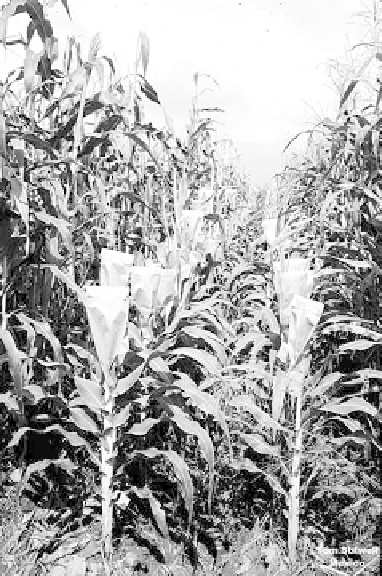Agriculture Reference
In-Depth Information
progeny over that of their parents. Hybrid vigor is greatest when the two parents are
genetically dissimilar. The effect is most easily seen when the two parents each
come from a genetically uniform line.
The first step in making a hybrid is to form at least two lines of inbreds. These are
plants that are self-pollinated by the plant breeder to eventually have a genetically
uniform makeup. The step of self-pollination is labor intensive, involving placing
paper bags on the tassel, as shown in Figure 12.5. When the inbred lines are crossed,
the result is a first-generation (F1) hybrid that typically grows and yields much better
than either parent. A commercial maize breeding program is able to produce a new
hybrid in a period of 10 to 12 planting cycles. This includes time for development of
the inbred lines, testing the lines, making crosses, and testing the resulting hybrid in
field trials. This can be shortened to 5 to 6 years if winter plantings are made in the
Southern Hemisphere, usually Argentina or Chile.
The result is a variety that yields better, resists disease, or has other desirable
characteristics. However, in the rush to accomplish a specific goal, some unknown
traits may be included or selected out. This occurred in the United States in 1970
when race T of the Southern corn leaf blight appeared and infected a large number
of fields in the Corn Belt. It spread so quickly because most hybrids in use at the
time incorporated Texas male cytoplasm in their inbred lines. This line was very sus-
ceptible to the new race of disease. At some point during the hybrid development
Figure
12.5.
Inbred line of maize.









